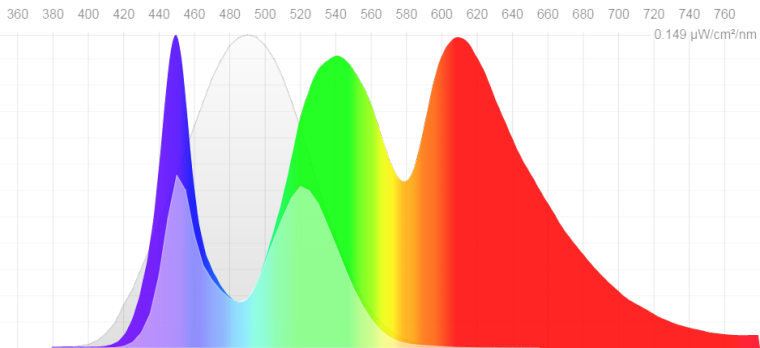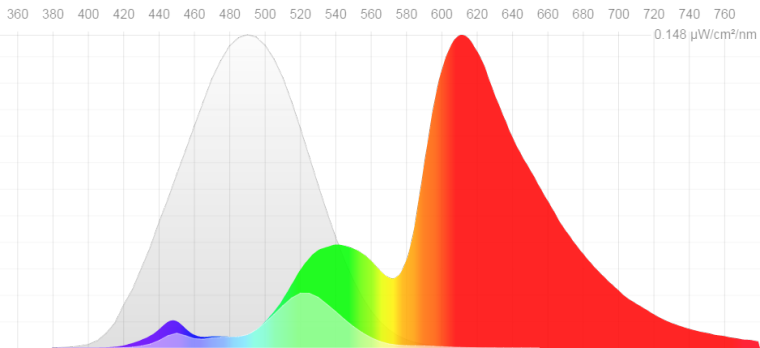f.lux vs. Night Shift in macOS 10.12.4
-
- What are the differences in functionality, if any, between f.lux and the new Night Shift in macOS 10.12.4?
- If one uses Night Shift in macOS 10.12.4, how should f.lux be uninstalled?
-
Great question. Do you use f.lux?
-
@lorna: Yes, I'm currently using f.lux with macOS 10.12.3. Hence my question, because I will certainly want to upgrade to 10.12.4 once it's past beta and actually released.
If Night Shift includes all the features that I used from f.lux and does as good a job at "warming" the color at night, then it would be superfluous to use f.lux. And, I presume, there's a bit less overhead when using something that's built right into the OS, rather than a 3rd-party app that rides on top of the OS.
-
@mexulf it will all depend on what you mean by "does as good a job at 'warming' the color at night." By our measurements their settings do not reduce very much alerting blue light. Our position is if you want a slightly warmer screen it can probably do that. If you care about sleep, I hope you'll stick with f.lux.
We have been thinking about this problem for years, and we have learned far more about both the science and human biology than I could ever put into a forum post. At the risk of sounding flip here (and I'm not trying to), it is not difficult to turn screens slightly less blue at night, and from what we've seen so far, it appears that's their approach.
To be fair, we thought it was pretty easy after our first year making f.lux (Night Shift today looks a whole lot like our first version). We figured we'd solved the blue light problem and that there just wasn't much left to do. We couldn't have been more wrong. Every person has individual needs, and those needs are different based on your sensitivity to light, your own chronobiology (imagine early birds and night owls), your own schedule, and other factors too. Those needs change across seasons, and over your lifetime. Today our approach is different: we are working every day to understand how light affects human biology, not strictly sleep, and we are constantly applying what we learn to updates and new features for f.lux.
Making software with an accurate understanding of human biology and circadian timing is incredibly complicated, the most interesting problem we've ever come across. In fact this question of light and sleep (and human health) is an area of very active scientific research. We want to really understand this, and we will need a lot of help to do it. That's our ultimate goal with f.lux, and I don't see any of that foundation in their copy.
We have been working largely in stealth mode for the last couple of years with all this in mind, and soon we will begin releasing some of what we've created. I hope you’ll try it out and let us know what you think (and there are instructions for uninstalling in our FAQ if that’s what you would prefer to do).
-
@lorna Thanks for the very detailed response.
Am I correct that one can leave f.lux installed when upgrading macOS to 10.12.4, and then selectively use either f.lux or Night Shift?
-
@lorna I have a question, but I am only asking for my own education and to deepen my understanding of why f.lux is superior:
What do you mean when you say that your measurements, their settings do not reduce very much alerting blue light? Does this mean that Night Shift can potentially look like it's blocking out all blue light (like say 800K or something) but it's actually not? Or, does it mean that Night Shift can't get anywhere near as warm as f.lux?
Can you spell it all out for me? What makes f.lux the best? I know it's the best, but I don't understand exactly why. All I think I know is, f.lux's warmer color temperatures are actually 100% true whereas other programs are fake.
-
@TwoCables For a quick response, I can tell you that what I've seen from night shift is that it appears to get about 3000K or maybe slightly higher, near a halogen output. This seems to match what is available on the fluxometer website.
Night shift does get warm, but only slightly above a sunset, and can't get down to incandescent and candle levels. Also, it will not adjust with the seasons etc. Now I do think Apple's default is a good precursor to get people used to the effect, but there is NO guide or notification of any kind to explain what it does for people that are not going to know it exists. I really do not appreciate that, and my stance is still firm that Apple does not have the same experience nor passion for this type of software.
-
I have two things to say about Apple's copy of f.lux.
#1 Amount
Night Shift's defaults are pretty gentle, and for most people they won't reduce the impact of a screen by very much. Here's what Night Shift does before bedtime:

And here's what f.lux does before bedtime:

With both, you're going to see orange, and most people won't understand that there can be a tremendous amount of blue-green light in that orange light. Apple is claiming to help people sleep, but their displays are really far from achieving "circadian darkness".
So right now, about half the press about this is saying you don't have to worry about "blue light" anymore before bed, and this is just incredibly untrue.
We've spent the time to understand how light affects sleep because we want our software to actually work for almost everyone. But the numbers from Apple's efforts just aren't enough to help sleep.
To use an example that explains why I'm pretty convinced they're not doing enough, consider that the warmest Night Shift setting makes an iMac show more light at night than the iPad that Harvard studied back in 2012.
This means you should really dim your screen at night a whole lot, because a big screen makes a lot of light.
The "Color" vs. the "Amount" of light
Our circadian system is actually not reacting to small changes in "color". Instead, it is mostly reacting to the "amount" of light. Our eyes are extremely good at distinguishing little shades of color from each other, but this is a different system than the one that drives circadian rhythms.
And so if you rely on what makes your eyes feel relaxed, it's not always going to connect up with your sleep timing - maybe you'll feel like reading later because it feels better. This is the same assumption we made in 2008! But now people are trying to guess that what "looks good" will always help you sleep better. This really only gets you a little bit of the way to understanding what's going on in the body. So, you should know that "the name of the color" isn't a very good way to measure light, and the "amount of blue-green light" is a lot better way to think about it.
With screen filters, we've seen people compare products that remove 10% of the bright light at night with ones that remove 99%, and they seem to think they're about the same. This idea that everyone is doing basically the same stuff in this area, is what we're up against in the public discussion, and it's pretty hard. If you're interested in this topic, you should be pretty critical and ask for the numbers always.
So starting there, f.lux removes 4-5x as much by default as Night Shift does, and yet it seems like most people will continue to think the two are similar, when they aren't in the same range.
#2: timing
The second idea we've been working on with f.lux is that everyone can benefit from slightly different timing of bright and dark, and getting control of the clock in your brain is pretty hard to get right. This "timing" is actually different than picking the times the lights turn on and off - it's about understanding how those lights affect you. So it's your timing, not the timing of the lights. You can't really guess about this - you need some careful measurement over days and weeks.
In this regard, most people we've talked to believe that the only way that light is disrupting their sleep is in the moment, right now. And so if they turn out the lights a little bit before bed, they'll sleep better. But this is not the big picture at all - how our bodies understand day and night (and the seasons) is a very complicated process, and it varies a lot from person to person and throughout the day.
A few of these ideas are already in the Mac f.lux build, but not so much in Night Shift.
We're building a new set of tools around these ideas, and we really hope some of our users are going to understand that what we're doing with f.lux is pretty different, and there's no substitute for trying to understand how human biology works.
We're working every day on this, making f.lux better all the time. We really hope you'll help us out with what we're doing next.
-
Thank you!
-
@herf when you are comparing to Night Shift, are you using the default mode? How much blue light does it remove if you put it on the warmest setting?
-
@cjmegatron81 The full dataset is here for iPad Pro:
https://fluxometer.com/rainbow/#!id=iPad Pro Night Shift/defaultThe Night Shift UI implies that the defaults will help you sleep better, which I disagree with. To be specific, their defaults remove <30% of the impact blue light has on your body. (Your body wants a "dark signal" not a "slightly less bright" signal.) Also, in software we know that a huge majority of people stick with the default settings.
The strongest settings do appear to be better. However, the Mac version is also brightening the screen on the warmer settings (which cancels out most of the benefit), so the iPad data are somewhat better than the Mac. We'll post data when we've updated a newer machine.
-
@herf is it possible for me to run tests on my machine to find out myself? I have a late 2015 iMac.
-
@cjmegatron81 We have a way to do this coming up very soon. Most of the f.luxometer measurements are done on a Photo Research PR-655 Spectra Scan, you can see the current project at https://fluxometer.com/rainbow/
-
@lorna thanks!
-
I have compared Night Shift with f-lux for the past couple of days, or should I say evenings and nights, and I do not hesitate to say that f.lux is much better than Night Shift. So, I happily donated another 5$ this year. Keep up the good work!
-
Very nice comparison. Are you guys planing to compare the night mode in Windows 10 with f.lux?
-
@AlixSPQR Thank you for your kind words and your support, it means a lot.
-
@meinmoises Yes, we post all new data at the f.luxometer project: https://fluxometer.com/rainbow
-
@lorna You're welcome! :slight_smile:
-
One (and the only one) thing that Night Shift as of now does better is that there is no white areas color corruption on fullscreen YouTube videos.